 W
WAğa Hamamı is a historical Turkish bath located on Turnacıbaşı street in the Taksim Square neighborhood of Istanbul, Turkey. It was constructed by İbrahim Ağa in 1454.
 W
WAnatolian rug is a term of convenience, commonly used today to denote rugs and carpets woven in Anatolia and its adjacent regions. Geographically, its area of production can be compared to the territories which were historically dominated by the Ottoman Empire. It denotes a knotted, pile-woven floor or wall covering which is produced for home use, local sale, and export. Together with the flat-woven kilim, Anatolian rugs represent an essential part of the regional culture, which is officially understood as the Culture of Turkey today, and derives from the ethnic, religious and cultural pluralism of one of the most ancient centres of human civilisation.
 W
WVakıf Museum is an ethnography museum in Ankara, Turkey exhibiting endowed articles.
 W
WAqsaqal or aksakal metaphorically refers to the male elders, the old and wise of the community in parts of Central Asia, the Caucasus and Bashkortostan. Traditionally an aqsaqal was the leader of a village or aul until the Soviet times. Acting as advisors or judges, these elders have or had a role in politics and the justice system in countries and tribes. For instance, there are aksakals courts in Kyrgyzstan. In Uzbekistan, which has traditionally been a more urban society, cities are divided up into mahallas. Each mahalla has an aqsaqal who acts as the district leader.
 W
WÖmer Şükrü Asan is a Turkish folklorist, photographer and writer.
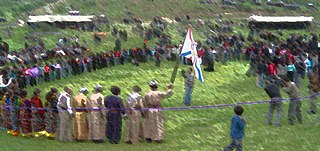 W
WThe culture of the Assyrians is both distinct from those of neighbouring ethnic groups as well as ancient. Many Assyrians still speak, read and write various Akkadian-influenced dialects of Eastern Aramaic, labelled by linguists as Northeastern Neo-Aramaic and Central Neo-Aramaic. They are predominantly adherents of several denominations of Syriac Christianity, notably the Ancient Church of the East, the Assyrian Church of the East, the Chaldean Catholic Church, the Syriac Catholic Church and the Syriac Orthodox Church. Some are followers of the Assyrian Pentecostal Church and Assyrian Evangelical Church. A minority are secular or irreligious.
 W
WAtatürk's Address To The Youth of Turkey is a famous speech by the Republic of Turkey's first president, founding father, and national hero, Mustafa Kemal Atatürk, spoken as the concluding statements to his 36-hour 20 October 1927 address to the Parliament, wherein he laid out, in a sweeping and thoroughly-detailed retrospective, the history and intellectual foundations of the Turkish War of Independence and the fight for modernity, liberty and democracy that fueled the Turkish Revolution, and ultimately led to the October 29, 1923 establishment of the Republic of Turkey.
 W
WAtatürk's cult of personality was started by Mustafa Kemal Atatürk's successors after his death in 1938, by members of both his Republican People's Party and opposition parties alike, and in a limited amount by himself during his lifetime in order to popularize and cement his social and political reforms as a founder and the first President of Turkey. It has been described as the "world's longest-running personality cult".
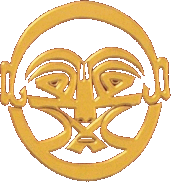 W
WAn Alevi and sunni religious leader related to a Dede in Sufism.
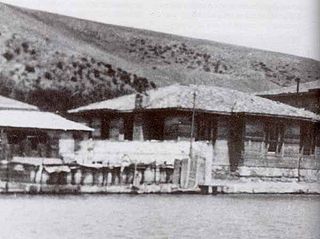 W
WBahariye Mevlevihanesi was the third establishment after Galata and Yenikapı Mevlevi houses and established in 1613 by the Ottoman Grand Vizier Ohrili Hüseyin Pasha in Beşiktaş, Istanbul.
 W
WCamel wrestling is a sport in which two male Tülü camels wrestle, typically in response to a female camel in heat being led before them. It is most common in the Aegean region of Turkey, but is also practiced in other parts of the Middle East and South Asia.
 W
WA cemevi or cem evi (pronounced and sometimes written as djemevi; meaning literally "a house of gathering" in Turkish. It's a place of fundamental importance for Turkey's Alevi-Bektashiyyah tariqa populations. Certain Alevi organizations describe cemevis as places of worship, and ask for this to be officially recognized. However, the Directorate of Religious Affairs of Turkey doesn't recognise cemevis as Muslim places of worship, only Sunni and Ja'fari-Shi’ite mosques.
 W
WA dede is a socio-religious leader in the Islamic Alevi and non-Islamic Ishiki community. It is one of the 12 ranks of Imam in Alevism. The institution of dede is the most important of all the institutions integral to the social and religious organization of the Anatolian Alevis. Although much weakened as a result of the socio-economic transformation experienced in Anatolia towards the end of the nineteenth century, and particularly due to accelerated migration from the rural to the urban areas after the foundation of the Republic of Turkey, it played a primary role in the survival of Alevism until today.
 W
WThe Efe were the leaders of Turkish irregular soldiers and guerillas from the Aegean Region of Turkey, called the Zeybeks and Kızan. There are several theories about the origins of the word Efe.
 W
WGeographical name changes in Turkey have been undertaken, periodically, in bulk from 1913 to the present by successive Turkish governments. Thousands of names within the Turkish Republic or its predecessor the Ottoman Empire have been changed from their popular or historic alternatives in favour of recognizably Turkish names, as part of Turkification policies. The governments have argued that such names are foreign or divisive, while critics of the changes have described them as chauvinistic. Names changed were usually of Armenian, Greek, Georgian, Bulgarian, Kurdish, Zazaki, Syriac or Arabic origin.
 W
WGreek Muslims, also known as Grecophone Muslims, are Muslims of Greek ethnic origin whose adoption of Islam dates to the period of Ottoman rule in the southern Balkans. They consist primarily of the descendants of the elite Ottoman Janissary corps and Ottoman-era converts to Islam from Greek Macedonia, Crete, and northeastern Anatolia and the Pontic Alps. They are currently found mainly in the west of Turkey and the northeast.
 W
WA hammam or Turkish bath is a type of steam bath or a place of public bathing associated with the Islamic world. It is a prominent feature in the culture of the Muslim world and was inherited from the model of the Roman thermae. Muslim bathhouses or hammams are historically found across the Middle East, North Africa, al-Andalus, Central Asia, the Indian subcontinent, and in central and Eastern Europe under Ottoman rule. A variation on the Muslim bathhouse, the Victorian Turkish bath, became popular as a therapy, a method of cleansing, and a place for relaxation during the Victorian era, rapidly spreading through the British Empire, the United States of America, and Western Europe.
 W
WHıdırellez or Hıdrellez is celebrated as the day on which the Prophets Hızır (Al-Khidr) and Ilyas (Elijah) met on Earth. Hıdırellez starts on May 5 night and falls on May 6 in the Gregorian calendar and April 23 in the Julian calendar. It is celebrated in Turkey. It celebrates the arrival of spring. People pray on this day whatever their wishes are. They make symbols with stone or draw of their wishes.
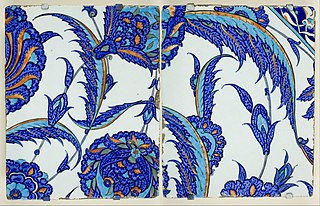 W
WIznik pottery, or Iznik ware, named after the town of İznik in western Anatolia where it was made, is a decorated ceramic that was produced from the last quarter of the 15th century until the end of the 17th century.
 W
WThe central Alevi communal worship service is called a cem, which is performed in special houses called as Cem Evi. Alevi Muslims believe that the Jem has its roots in an original worship and teaching meeting of forty spiritual individuals Kirklar Majlisi led by Ali. It takes place in a Cem Evi
 W
WMany motifs are used in traditional kilims, handmade flat-woven rugs, each with many variations. In Turkish Anatolia in particular, village women wove themes significant for their lives into their rugs, whether before marriage or during married life. Some motifs represent desires, such as for happiness and children; others, for protection against threats such as wolves and scorpions, or against the evil eye. These motifs were often combined when woven into patterns on kilims. With the fading of tribal and village cultures in the 20th century, the meanings of kilim patterns have also faded.
 W
WIn 1292, Marco Polo was the first to make mention of the Konya carpets in writing when he called them the most beautiful in the world. Konya carpets are named for the region in which they were made. Renamed from the Greek “Iconium” when the Seljuk Sultans of Rum made it their capital, Konya is one of the largest, oldest and continuously occupied cities in Asia Minor. When Polo wrote of the Konyas, he had probably seen them in manufactories that were attached to the Seljuk courts. In the early 20th century, large carpets were found in the Alaadin Mosque in Konya; they are now housed in the Museum of Turkish and Islamic Arts in Istanbul. Scholars and collectors alike, primarily for their bold tribal designs and magnificent color combinations not to mention their rarity, covet Konya rugs.
 W
WKöprülü Library is a library in Istanbul. It was commissioned by Ottoman Grand Vizier Köprülü Mehmed Pasha in 1661. It was the first public library in the Middle East. The library currently contains 3,790 manuscript volumes.
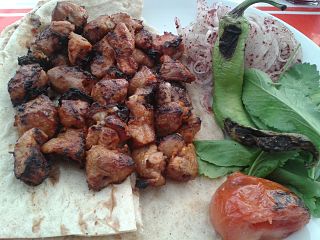 W
WKuzu şiş is a Turkish lamb kebab made with the thigh of the lamb, and served with onion and tomato garnishes.
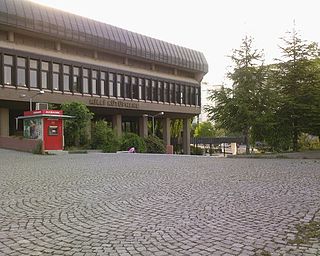 W
WThere are four type of libraries in Turkey.National Library Public Libraries School libraries University libraries
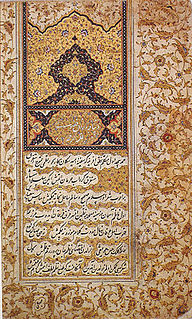 W
WTurkish literature comprises oral compositions and written texts in Turkic languages. The Ottoman and Azeri forms of Turkish, which forms the basis of much of the written corpus, were highly influenced by Persian and Arabic literature, and used the Ottoman Turkish alphabet.
 W
WMangala is a traditional Turkish mancala game. It is strictly related to the mancala games Iraqi Halusa, Palestinian Al-manqala, and Baltic German Bohnenspiel. There is also another game referred as Mangala played by the Bedouin in Egypt, and Sudan, but it has quite different rules.
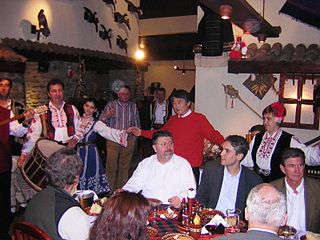 W
WA meyhane is a traditional restaurant or bar in Turkey, Azerbaijan, Iran and the Balkans. It serves alcoholic beverages like wine, rakı, vodka, beer with meze and traditional foods. "Meyhane" means house of wine and is composed of two Persian words: mey (wine) and khāneh (house). The word entered the Serbian and Bulgarian languages as mehana and in Macedonian as meana. In Bosnian language the word "mejhana" is used. A meyhane used to serve mainly wine alongside meze until the late 19th century when rakia established itself as the quasi-official national drink of Bulgaria. In Serbia, the word mehana is considered archaic, while in Bulgaria it refers to a restaurant with traditional food, decoration and music.
 W
WA Murshid is one of the 12 ranks of Imam in Alevism.
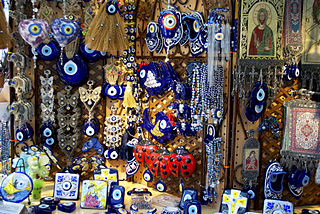 W
WA nazar is an eye-shaped amulet believed to protect against the evil eye. Hindi, Urdu, Pashto, Bengali, Kurdish, Persian, Punjabi, and other languages have borrowed the term as well. In Turkey, it is known by the name nazar boncuğu, in Greece is known as mati. In Persian and Afghan folklore, it is called a cheshm nazar or nazar qurbāni. In India and Pakistan, the Hindi-Urdu slogan Chashm-e-Baddoor is used to ward off the evil eye. In the Indian subcontinent, the phrase "Nazar lag gai" is used to indicate that one has been affected by the evil eye.
 W
WNew Year trees are decorated trees similar to Christmas trees that are displayed to specifically celebrate the New Year. They should not be confused with the practice of leaving up a Christmas tree until after New Year's Day. New Year trees are common in various cultures and nations, chiefly the former Soviet Union, former Yugoslavia, Turkey, China and Vietnam.
 W
WÖmeriye Hamam in Nicosia, Cyprus is a historic Ottoman hammam. It was created by Lala Mustafa Pasha in the 1570s, soon after the Ottoman conquest of Cyprus, and was part of the larger complex of the Ömeriye Mosque dedicated to the memory of the Caliph Omar. The complex reused the earlier 14th-century Augustinian church of St. Mary which was damaged in the Ottoman siege. The hammam was restored in 2002-2004 as part of the Lefkosia Master Plan and is still in use today as a bathhouse and spa.
 W
WA peshtemal is a traditional towel used in baths. A staple of Ottoman hammam culture, dating back hundreds of years, the pestemal was originally designed to help individual bathers maintain their privacy. In addition to being highly absorbent, pestemals dry faster than thicker towels.
 W
WIn Alevism, a Pir meaning Elder is one of the 12 ranks of Imam in Alevism. The rank of Dede or Ana are selected from among the Pirs.
 W
WRaindrop Turkish House is a non-profit social and cultural organization founded by Turkish people in Houston, Texas in 2000. It operates in eight states: Texas, Arkansas, Kansas, Oklahoma, Mississippi, New Mexico, Tennessee, and Louisiana. The Raindrop Foundation aims to cultivate friendship and promote understanding of diverse cultures through its unique services to the community.
 W
WIn Alevism, a Rehber also known as Murshid is one of the 12 ranks of Imam in Alevism. A Rehber assists the Pir, provides information to the newcomers and prepares them for commitment to the Alevi path or Tariqat.
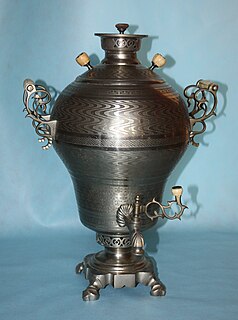 W
WA samovar is a metal container traditionally used to heat and boil water. Although originating in Russia, the samovar is well known outside of Russia and has spread through Russian culture to Eastern Europe, South-Eastern Europe, Iran, Afghanistan, the Kashmir region of India, the Middle East, Azerbaijan and is also known in some parts of Central Europe. Since the heated water is typically used to make tea, many samovars have a ring-shaped attachment around the chimney to hold and heat a teapot filled with tea concentrate. Though traditionally heated with coal or kindling, many newer samovars use electricity to heat water in a manner similar to an electric water boiler. Antique samovars are often prized for their beautiful workmanship.
 W
WSuleymaniye Hamam is an historic Turkish bath in İstanbul, Turkey. The building, situated on a hill facing the Golden Horn, was built in 1557 by Turkish architect Mimar Sinan; it was named for Süleyman the Magnificent. It is part of the Suleymaniye mosque complex.
 W
WTea is popular throughout Turkey and the Turkish diaspora. Turkish tea culture also extends to Northern Cyprus and some countries in the Balkan Peninsula.
 W
WTurkic mythology features Tengriist and Shamanist strata of belief along with many other social and cultural constructs related to the nomadic existence of the Turkic peoples in early times. Later, especially after the Turkic migration, some of the myths were embellished to some degree with Islamic symbolism. Turkic mythology shares numerous points in common with Mongol mythology and both of these probably took shape in a milieu in which an essentially nationalist mythology was early syncretised with elements deriving from Tibetan Buddhism. Turkic mythology has also been influenced by other local mythologies. For example, in Tatar mythology elements of Finnic and Indo-European mythologies co-exist. Beings from Tatar mythology include Äbädä, Alara, Şüräle, Şekä, Pitsen, Tulpar, and Zilant. The early Turks apparently practised all the then-current major religions, such as Buddhism, Christianity, Judaism and Manichaeism, before the majority converted to Islam; often syncretising these other religions into their prevailing mythological understanding.
 W
WTurkish coffee is a style of coffee prepared using very finely ground coffee beans without filtering.
 W
WThe Turkish Cultural Foundation promotes and preserves Turkish culture and heritage worldwide, and places special emphasis on education for disadvantaged students in Turkey and abroad. Created in 2000, the Foundation seeks to help build cultural bridges between Turkey and other countries in order to support a better understanding and appreciation of Turkish cultural heritage. To do this, the Foundation coordinates a series of people-to-people cultural exchanges, educational programs, and websites promoting Turkish music, art, and cuisine. As a US tax-exempt public charitable organization, the Foundation is supported entirely by private donations and has offices in Boston, Istanbul, Sonoma and Washington, DC.
 W
WTurkish folk dress is a traditional style of clothing worn primarily in the rural parts of Turkey. Within the folk style of clothing are many variations based on region, gender, ethnicity, and class of the wearer.
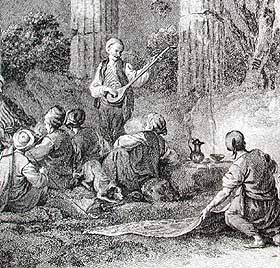 W
WTurkish folk literature is an oral tradition deeply rooted, in its form, in Central Asian nomadic traditions. However, in its themes, Turkish folk literature reflects the problems peculiar to a settling people who have abandoned the nomadic lifestyle. One example of this is the series of folktales surrounding the figure of Keloğlan, a young boy beset with the difficulties of finding a wife, helping his mother to keep the family house intact, and dealing with the problems caused by his neighbors. Another example is the rather mysterious figure of Nasreddin, a trickster figure who often plays jokes, of a sort, on his neighbors.
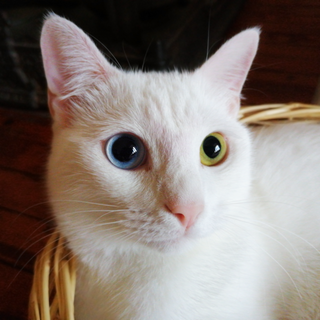 W
WVan cats are a distinctive landrace of the domestic cat found in the Lake Van region of eastern Turkey. They are relatively large, have a chalky white coat, sometimes with ruddy coloration on the head and hindquarters, and have blue or amber eyes or have heterochromia. The variety has been referred to as "the swimming cat", and has been observed to swim in Lake Van.